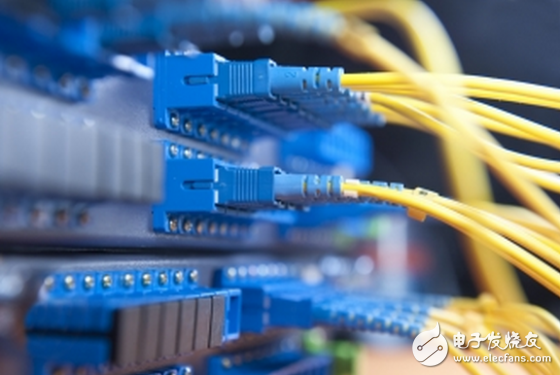On November 28th, a technical executive of the operator recently admitted to the outside world: "The bandwidth we promised is far from the actual speed of the user. It is a common phenomenon. This is called fake broadband."
The problem of fake broadband has once again triggered the attention of the outside world. For domestic users, a big doubt is why the speed of the network is always inconsistent with the promotion. In fact, this problem is considered in two cases.
 The first case: definition confusion.
The first case: definition confusion. If the user is dealing with 20M broadband, 20M here refers to 20 megabits per second (ie 20Mbit/s), and some real-time speed measurement software used by users usually shows the speed when the user downloads, and the unit of measurement is The number of kilobytes, the two is a 1:8 relationship, so 20M broadband corresponds to a download speed of 2.5MB per second, 10M broadband corresponds to 1.25MB per second, and 8M broadband corresponds to 1MB per second... analogy. But these are theoretical rates, which are actually slightly lower than this.
Or take 20M broadband as an example. If the download speed can reach 2MB/s, it can be basically determined that the network speed is in compliance with the access standard. No country in the world can achieve 100% theoretical download speed. The regions such as the United States, Japan, and South Korea are relatively leading in technology, and can reach about 90%, and fluctuate within the range of 75%-90%, which can be regarded as normal.
Therefore, the conclusion of the first case is that if the user finds that the difference between his own network speed and the actual download speed is about 8-10 times, don't complain, it is very likely that he has forgotten to convert the unit.
The second case: When the user converts the unit and the network speed is still very different, it may actually encounter “fake broadbandâ€.From the perspective of broadband network structure, the broadband speed provided by the three major operators has other access devices in the middle of the user terminal, so the actual speed and theory will be deviated, and the intermediate access link is the second- and third-level operators.
In order to pursue higher economic benefits, the second- and third-level network operators do not guarantee that the broadband network user experience is the main cause of the "fake broadband" problem. This is mainly caused by two reasons: one is the exclusive broadband sharing, and the other is to force the installation of the designated network that is not qualified.
It is understood that the broadband sales market can be divided into three levels: the primary market is the backbone network wholesale market, and the lower-level backbone operators purchase the backbone network bandwidth from the top backbone operators. The secondary market is the broadband wholesale market; broadband providers wholesale bandwidth to backbone operators; the tertiary market is the broadband retail market, and broadband providers at all levels sell broadband services to users.
The backbone network wholesale market is a very special market, and has little to do with consumers. The closely related to consumers is the broadband wholesale market and the broadband retail market. “Fake broadband†mainly appears in the broadband retail market, that is, after private broadband providers sell bandwidth to low-cost operators to three operators, they have exclusive broadband at low prices, and absorb the most consumers to maximize profits. Consumers use the proprietary broadband network to turn an exclusive network into a shared network, causing users to rate much lower than the bandwidth they advertise.
Therefore, the real murder of "fake broadband" is clear at a glance.
In addition to the above summary, what other factors are affecting the speed of the network more or less?
The first is the network itself. The bandwidth of the target website where the user wants to connect is insufficient or overloaded. The parallel processing capability of the website server is not strong enough to carry more users' access, and the rate of user experience is lower.
For example, the simplest action of a user to open a web page requires three links of "access speed", "transmission speed" and "response speed". The slowest speed among the three is the final speed felt by netizens.
If the server accesses too many requests at the same time, it will inevitably cause the response speed to be too slow and the network to be blocked.
Secondly, incorrect settings or incorrect settings of the network card, router, and DNS may also narrow the user's bandwidth.In addition, insufficient system resources, software updates, etc. can cause the network speed to slow down. It is recommended to check the PC regularly and clean up the programs that are loaded in the background. This is like the smartphone we use. Once the phone is slowed down, it needs to clean up useless applications to improve the speed of the phone.
In addition, there are some small details that can cause the network speed to slow down. Such as computers, "cats" and other terminals, close to household appliances that are prone to electromagnetic interference, such as microwave ovens, causing interference; after installing a wireless router, if no password is set, it may be "smashed" by other users, which may also cause network speed. decline.
Communication pole is a type of equipment used to support various types of communication equipment, such as antennas, satellite dishes, and other devices used to send and receive signals. These poles are typically made of metal or concrete and are designed to withstand harsh weather conditions and support heavy equipment.
Communication Pole,Antennas Communication Station,Telecommunication Poles,Frp Communication Pole
JIANGSU HONGGUANG STEEL POLE CO., LTD. , https://www.hgsteelpoles.com